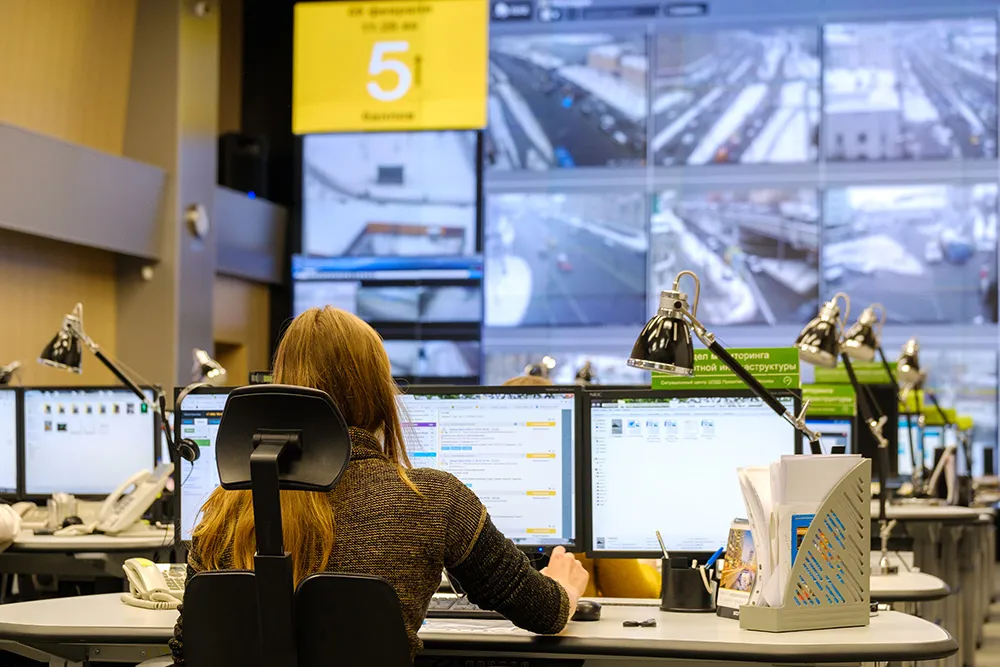An innovative project at a busy UK retail park could provide the blueprint for a new approach to pedestrian safety, according to its developers.
The system utilised hard-wired active flashing LED road studs from Rennicks UK to delineate the crossing, in conjunction with LED warning signs from Swarco. Pole-mounted C-Walk pedestrian detectors from Flir activate the high performance LED studs to create a striking visual warning for motorists approaching an internal crossing at Giltbrook, near Nottingham.
May 19, 2014
Read time: 3 mins
An innovative project at a busy UK retail park could provide the blueprint for a new approach to pedestrian safety, according to its developers.
The system utilised hard-wired active flashing LED road studs from Rennicks UK to delineate the crossing, in conjunction with LED warning signs from129 Swarco. Pole-mounted C-Walk pedestrian detectors from 6778 FLIR activate the high performance LED studs to create a striking visual warning for motorists approaching an internal crossing at Giltbrook, near Nottingham.
Early indications show the bespoke system is already persuading drivers to approach at lower speeds.
Gordon Stitt, of traffic technology specialists Swarco, said: “Managers at the retail park wanted to enhance drivers’ awareness of foot traffic and together with Rennicks we have created an intelligent solution. The behaviour of drivers changed almost immediately and feedback has so far been really positive. The system is certainly doing its job and, while this was the first of its kind in this country, it could be the start of a new approach.
“Other sites might well want to follow suit when they see the success of this project and, if long-term results prove as positive as we expect, then I’d advocate a similar type of scheme for use on public roads one day. That would require the system to pass through various levels of legislation, but there is certainly massive potential for the concept.”
He added: “The flashing studs work only when pedestrians are using the crossing, so drivers know from a fair distance away that they must slow down. People are sometimes not alert as they should be if lights are flashing all the time, so the fact that the studs blink only when pedestrians are using the crossing creates an instant alert.”
John Swift of Rennicks UK, said: “These studs provide unique perception levels as they use technology which is in itself unique - making them the brightest and most reliable products available. “I experienced the staggering difference they have made at Giltbrook myself and I believe there’s been positive feedback all round.
“The system is designed to improve pedestrian safety but is not inhibitive to drivers - it simply reminds them they are off the public highway and provides a step change in the thought process. The studs can be used on any privately-owned retail parks, leisure sites, bus stations, even hospitals – any area where there’s a need to raise awareness of pedestrians or where hazard warning or enhanced navigation is important.”
The system utilised hard-wired active flashing LED road studs from Rennicks UK to delineate the crossing, in conjunction with LED warning signs from
Early indications show the bespoke system is already persuading drivers to approach at lower speeds.
Gordon Stitt, of traffic technology specialists Swarco, said: “Managers at the retail park wanted to enhance drivers’ awareness of foot traffic and together with Rennicks we have created an intelligent solution. The behaviour of drivers changed almost immediately and feedback has so far been really positive. The system is certainly doing its job and, while this was the first of its kind in this country, it could be the start of a new approach.
“Other sites might well want to follow suit when they see the success of this project and, if long-term results prove as positive as we expect, then I’d advocate a similar type of scheme for use on public roads one day. That would require the system to pass through various levels of legislation, but there is certainly massive potential for the concept.”
He added: “The flashing studs work only when pedestrians are using the crossing, so drivers know from a fair distance away that they must slow down. People are sometimes not alert as they should be if lights are flashing all the time, so the fact that the studs blink only when pedestrians are using the crossing creates an instant alert.”
John Swift of Rennicks UK, said: “These studs provide unique perception levels as they use technology which is in itself unique - making them the brightest and most reliable products available. “I experienced the staggering difference they have made at Giltbrook myself and I believe there’s been positive feedback all round.
“The system is designed to improve pedestrian safety but is not inhibitive to drivers - it simply reminds them they are off the public highway and provides a step change in the thought process. The studs can be used on any privately-owned retail parks, leisure sites, bus stations, even hospitals – any area where there’s a need to raise awareness of pedestrians or where hazard warning or enhanced navigation is important.”








